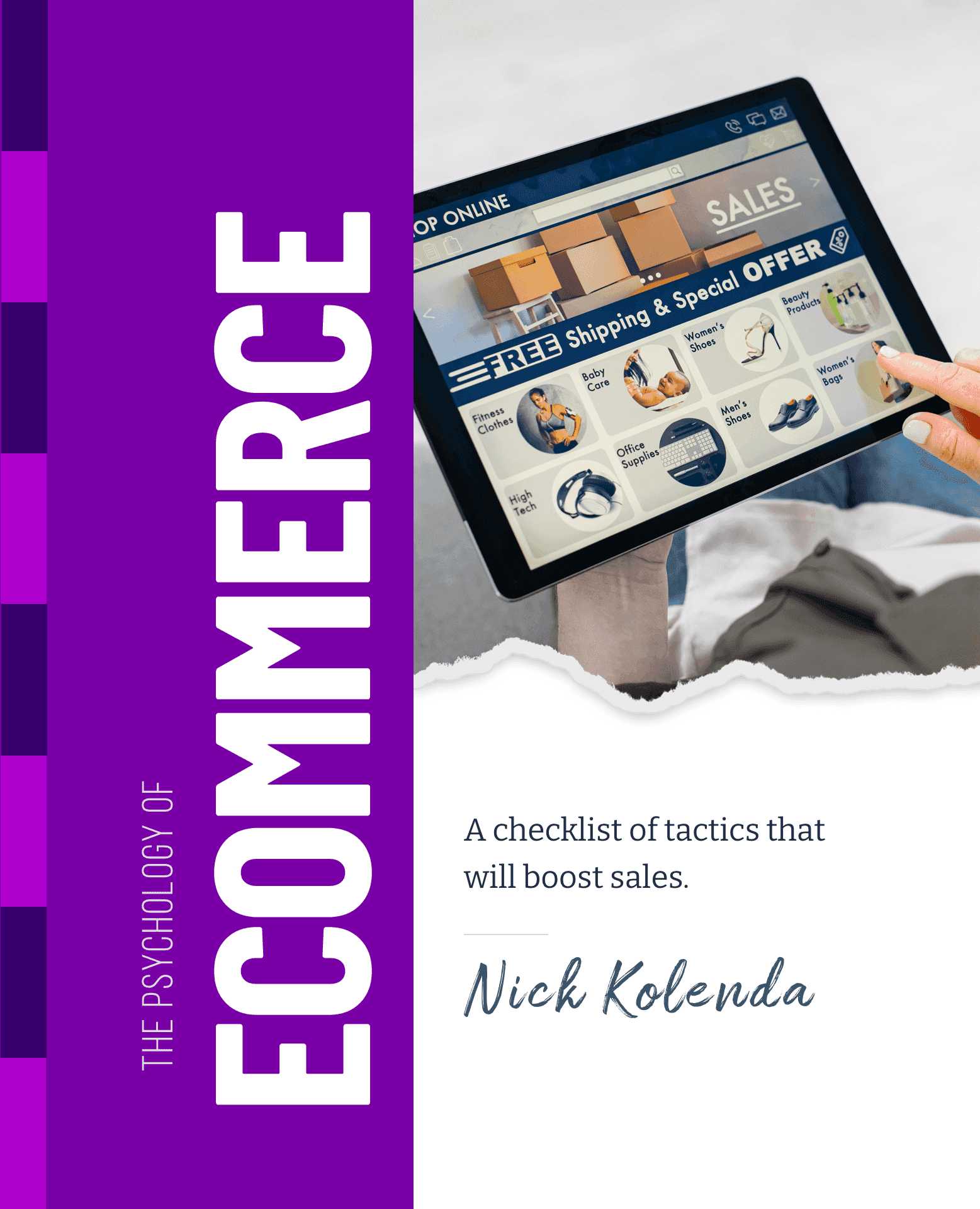
Let Customers Touch Products
Product Images
Let Customers Touch Products
Customers simulate this interaction.
Touching a product is persuasive.
Do you sell socks? Remove parts of your packaging so that customers can feel the texture and softness. Touching allows customers to assess quality, while instilling a feeling of ownership (Peck & Shu, 2009).
Digital contexts are tougher, but sometimes you can boost conversions by overlaying an "add to cart" button on top of a product, encouraging users to touch the product image (Shen et al., 2016).
And other tactics exist:

Ease Touch Using:
- Touchscreens. iPads and tablets can satisfy the haptic need to touch, especially if you modify the screen protector. Customers preferred whichever screen texture — coarse or grooved — matched the product they were browsing (Racat et al., 2021; Hattula et al., 2023; Cano et al., 2017).
- Zooming. Close-up images can reveal haptic features (e.g., textures, softness).
- Orientation. Most people are right-handed, so any graspable elements of a product (e.g., handle) should be positioned toward the right (Elder & Krishna, 2012).
- 3D Cues. Swivel your product, puff the sides, or tilt the camera to make your product look three-dimensional (Kwon et al., 2024). Digital products are especially important because their monetary value is more subjective (Atasoy & Morewedge, 2018).
- Haptic Decoys. A flat painting feels touchable next to a small object (e.g., vase; Maille et al., 2020; Leng et al., 2022).
- Vicarious Hands. Customers simulate the ownership of hands: "observing a hand engaging in touch can increase the perception that the virtual hand is actually the consumer’s own hand... [it] increases the psychological ownership of the product" (Luangrath et al., 2022, p. 306-307).
- Argo, J. J., Dahl, D. W., & Morales, A. C. (2006). Consumer contamination: How consumers react to products touched by others. Journal of Marketing, 70(2), 81-94.
- Atasoy, O., & Morewedge, C. K. (2018). Digital goods are valued less than physical goods. Journal of consumer research, 44(6), 1343-1357.
- Elder, R. S., & Krishna, A. (2012). The “visual depiction effect” in advertising: Facilitating embodied mental simulation through product orientation. Journal of Consumer Research, 38(6), 988-1003.
- Kwon, S., Suda, T., & Nomura, T. (2024). 3D versus 2D: Effects of the number of dimensions of product images on perceptions of product size. Journal of Consumer Behaviour.
- Leng, X., Zhou, X., Wang, S., & Xiang, Y. (2022). Can visual language convey tactile experience? A study of the tactile compensation effect of visual language for online products. Frontiers in Psychology, 13, 1034872.
- Luangrath, A. W., Peck, J., Hedgcock, W., & Xu, Y. (2022). Observing product touch: The vicarious haptic effect in digital marketing and virtual reality. Journal of Marketing Research, 59(2), 306-326.
- Peck, J., & Shu, S. B. (2009). The effect of mere touch on perceived ownership. Journal of consumer Research, 36(3), 434-447.
- Maille, V., Morrin, M., & Reynolds-McIlnay, R. (2020). On the other hand…: Enhancing promotional effectiveness with haptic cues. Journal of Marketing Research, 57(1), 100-117.
- Shen, H., Zhang, M., & Krishna, A. (2016). Computer interfaces and the “direct-touch” effect: Can iPads increase the choice of hedonic food?. Journal of Marketing Research, 53(5), 745-758.
- Silva, S. C., Rocha, T. V., De Cicco, R., Galhanone, R. F., & Mattos, L. T. M. F. (2021). Need for touch and haptic imagery: An investigation in online fashion shopping. Journal of Retailing and Consumer Services, 59, 102378.

Want more tactics?
Get all my free ecommerce tactics